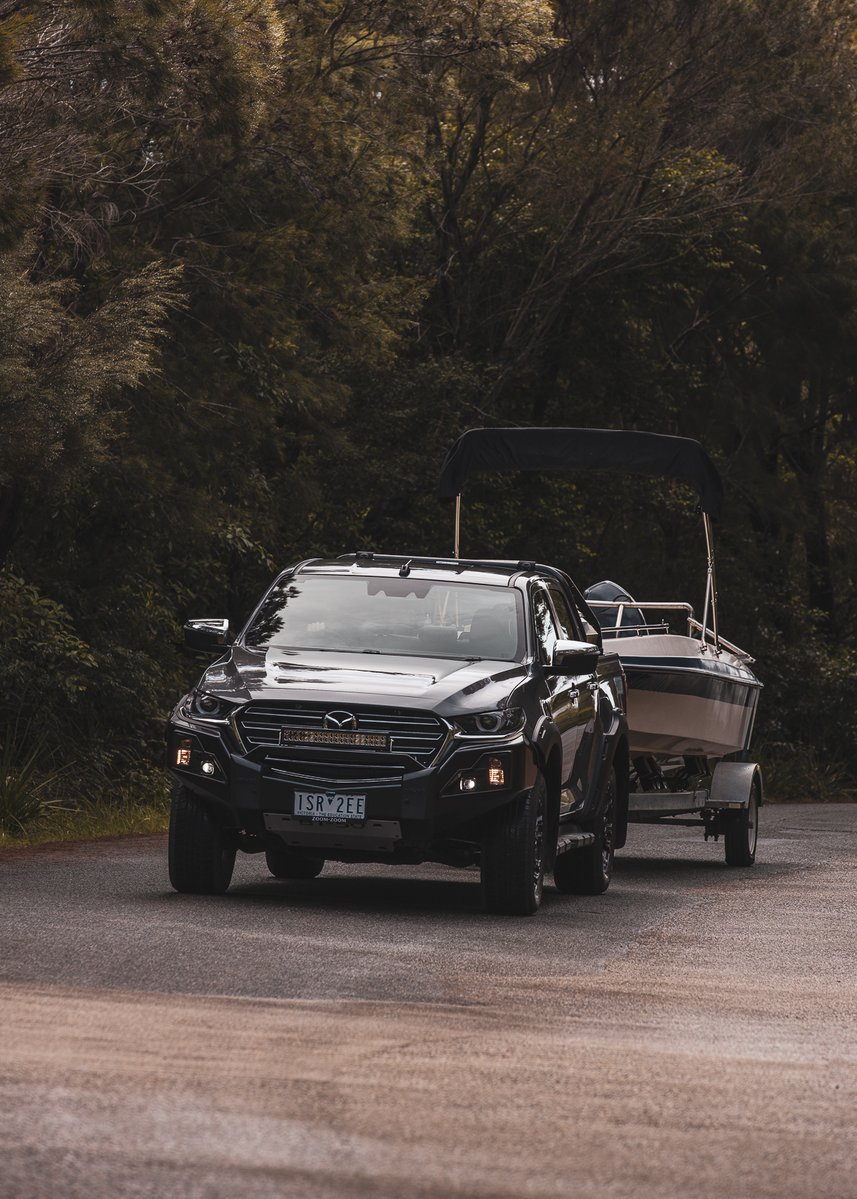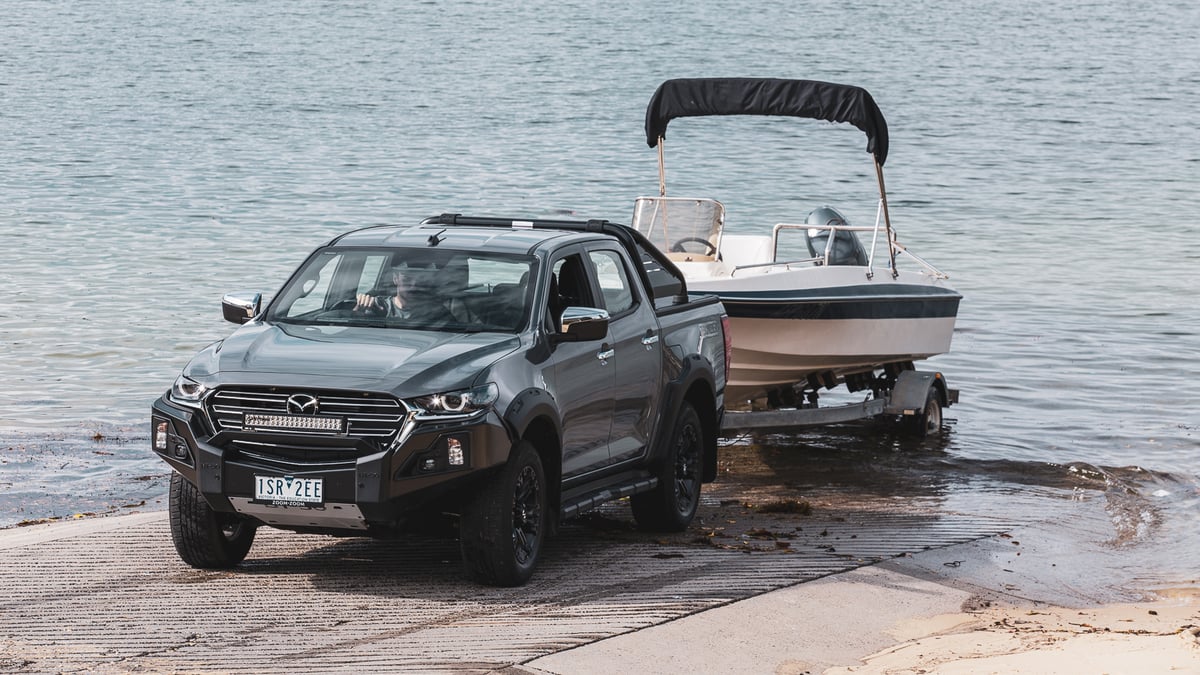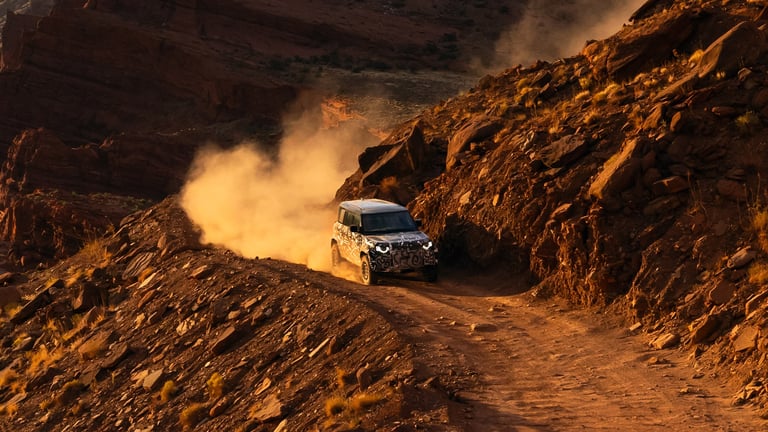There are very few things as fragile as a sense of self-worth. Whether it’s having to stop to ask for directions, or having a rival dad start your lawnmower first-go, they can be serious blows that take years to come back from. While the lawnmower is an easy fix (hint, diethyl ether will get you out of strife), messing up the trailer reverse at your local boat ramp might just be a shame you never live down, especially if it ends up on Kook Of The Day.
So you want to be the Kung-Fu master of the boat ramp…
To make sure you’re the undisputed king, we’ve put together a handy guide on everything you need to lug a trailer (or caravan) from one coast to the next. Off-road, on-road, in front of a gawking crowd as you effortlessly guide your box trailer backwards so smoothly, you’d be mistaken for a home-grown 007, if he was a handyman instead of a super spy, but we digress…
The secret art of trailer brakes
Step 1 to mastering the forgotten art of trailers is understanding the tools at your disposal to reign them in. The Brand-New Mazda BT-50 Thunder can be optioned with both a tow bar and electronic brakes before you take delivery. Fortunately, if your trailer weighs less than 750kg, you’re unlikely to require electronic brakes (which is good for the wallet), as most states won’t require brakes.
From there up to 2000kgs you’ll have at a minimum, ‘overrun brakes’. They’re quite basic brakes, essentially featuring a pedal in the hitch. If you slow down when driving, the trailer pushes into the pedal and then the trailer brakes apply. Overall, they’re pretty average.

Electronic brakes are what you want and they’re required on any trailer more than 2000kg. They’re also operated by a controller in your tow-tug. Some are good, some are bad. The optional factory-fitted unit lets you effectively set the level to which the brakes activate when you push the brake pedal, and allows the driver to manually operate the brakes on the trailer without using the car’s brakes. Any trailer above 2000kg will require a breakaway system too, so if you’ve goofed up your hitch, the trailer will (hopefully) stop if it falls off.
So why are electronic brakes the bee’s knees? Well, a couple of reasons, really. The first is you can dial in how aggressive you want them to grab. If you’re ducking and weaving through back streets to get to the boat ramp, you’ll want a different intensity than if you’re motoring along the highways of the Northern Territory at a buck 30 with a 3T caravan on the back. The second is that manually engaging the trailer brakes allows you to pull the trailer back into line if you get trailer sway, as stabbing the brakes in your tow-tug will make things worse. It’s worth mentioning that boat trailers will typically run electronically-controlled hydraulic brakes, so you’re not dunking the electrical components in the drink.
How to become the Kung-Fu master of reversing
Man-kind will argue over everything, even how many cycles the piston in your whipper snipper should take for each combustion (it’s two, by the way, don’t listen to the inferior four-stroke theories). How to backup a trailer is no different. There are two popular methods and both have their pros and cons.
The first (and infinitely inferior) method is over the shoulder. You throw your head backwards, look out the rear window past your camping gear and try to operate the steering wheel that is now behind you. It’s no good and we’ll gladly arm wrestle anyone who disagrees.
The correct method according to experts (yours truly) is facing straight ahead and using your mirrors. As you’re making your approach, do a visual check to make sure your trailer will fit, choose an anchor point (e.g. stick close to the telegraph pole), and position yourself so you only need to look out one mirror and monitor that gap. Then keep looking forward and stick as close to that anchor point as you can. You only have to monitor one mirror, too, which makes it far easier to think through your steering. Want the trailer to go left? Steer left. By sticking to the one arc there’s nowhere to go wrong.
The balancing act
Your trailer weight is important, but not as important as how it carries that weight. Let us explain. Our Brand-New Mazda BT-50 is rated to tow a maximum of 3500kg. It’ll do it all day, every day and twice on Sundays. Dropping down to 2500kg is a great thing, sure, it’ll make it tow easier on and off-road and use less fuel. Great stuff. Dropping down to 1500kg? You’d barely even feel it. As long as it’s balanced properly. If that 1500kg was all entirely on the tow-ball (let’s ignore physics for a minute) you’d quickly overload your rear suspension. You’d also come close to lifting the front wheels of the Mazda off the ground, too, which would do terrible things for your steering. Even taking weight off those front wheels will drastically alter your brakes and handling performance.
So what if you shifted that 1500kg back behind the axle of the trailer? You’d probably lift the Mazda’s rear wheels off the ground. Again, not ideal. But even if you didn’t, you’d find yourself with an unstable trailer that’d push the back end of the ute around like a cut snake. Tapping your trailer brakes may bring it back in, but from first-hand experience trailer sway is terrifying.
So what’s the sweet spot? Aim for around 5-15% of the trailer’s total weight on the towball. The trailer should be more front than rear heavy. It’ll keep the trailer stable without goofing up the handling of your ute. If you want to get yours dialled in you can buy towball scales that’ll tell you exactly how much weight you’re carrying.

When you’re getting dirty off-road
We didn’t get the BT-50 Thunder to keep it clean, and there’s only so much adventure you can have on the black top. Sooner or later you’ll be heading out bush and doing so with a camper or box trailer full of camping supplies. But what do you need to know about heading out bush rather than heading to the local hardware store?
Well first things first, line selection. There’s not too many ghost gum trees or tight switchbacks on the way to get a Sunday morning sausage sizzle. If you’re driving in tight terrain whether it’s river crossing exits or weaving through gum trees, the important thing to remember is your trailer is always going to make a tighter arc than the ute you’re pulling it with. That means if you’re hooking right around a tree you’ll need to get as far left as you can to give the trailer the room it needs. Think about trucks or buses turning left from the right lane and you’re bang on the money.

The next point to consider with your trailer is that it’ll pivot off where the axle is. If you’re watching an obstacle on your right, turning right before the axle goes past it will get you closer to the obstacle, turning right once the axle is past the obstacle will get you further from the obstacle. Think of yourself like a bee with a big butt that’ll swing around behind you. It’s not only a hilarious mental image, but also a handy tip to visualise the trailer swinging around.
You’ll need to factor in the trailer’s weight too, it’s essentially an anchor behind you and that can have its pros and cons. When travelling downhill in steep terrain manually engaging the trailer brakes will stop it from pushing you around and keep everything in line. When heading up hills, over downed trees, or up steps, you’ll need to do the opposite and ensure you’ve got plenty of momentum to have the trailer roll up and over the obstacle. That rule rings true both for hardcore off-roading, and driving a box trailer up a gutter.
The boat ramp showdown
This is it boys, the big day is here, this is what we’ve been training for. The boat ramp showdown. Before you go launching your boat, tow tug, and self-respect into the drink, there’s a few steps before you’re even in the spotlight. Step one is to fully prepare for battle.
Pull up in the staging area, check your drain plug is in, the keys are in, all your gear is loaded up, attach your bow line and remove your tie down straps. From here it’s time to head to the ramp.
If you can, hook around so you’ve got a straight shoot backwards. Line it up dead on then just roll back slowly, making minor adjustments to keep it in check. If not, follow the method we talked about before, watching the boat in just one mirror. Don’t worry about the crowds, they’ve got their own lives to worry about. Once you see the stern of your boat start to float then put your ute in park, and put the handbrake on. Then simply push it into the water using your bow line to guide it somewhere secure while you go park your ute basking in self-glory. Congratulations you boat launching legend, you’ve done your ancestors proud.
This article is proudly presented in partnership with Mazda. Thank you for supporting the brands who support Boss Hunting.























